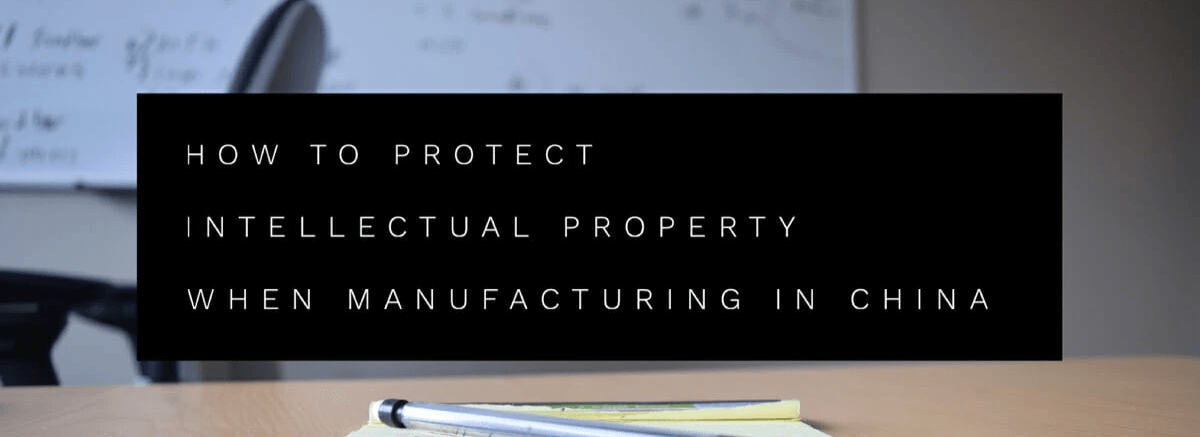The Hidden Risks Lurking in Global Supply Chains (AKA: The "That Looks Suspiciously Familiar" Phenomenon)
Imagine investing months—even years—developing a groundbreaking product, only to discover it's been replicated and sold by competitors before you can even launch. Suddenly, your revolutionary invention is about as exclusive as the common cold. This nightmare scenario plays out daily for businesses manufacturing in China, where intellectual property (IP) protection can feel like navigating a minefield while wearing a blindfold and flip-flops.
You: "Look at my innovative new product design!"
The Internet: "You mean the one already available in 12 colors with free shipping?"

Why This Matters Now More Than Ever (Besides the Obvious Reason That Nobody Likes Being Copied)
In 2024's hyper-competitive global marketplace, protecting your innovative ideas isn't just a legal formality—it's a critical business survival strategy, roughly as important as remembering to breathe. With China remaining a manufacturing powerhouse (producing everything from high-tech electronics to those plastic toys your kid obsesses over for exactly 3.5 days), understanding robust IP protection mechanisms is no longer optional; it's essential.
Think of IP protection like deodorant—you might think you can skip it, but the consequences can be socially and financially devastating.
1. Strategic IP Registration: Your Global Defense Shield (Because "Hoping for the Best" Is Not a Strategy)
Go Beyond Borders, Strategically (Not Like a Tourist Collecting Passport Stamps)
Not all IP registrations are created equal. Instead of a scattergun approach that leaves you with impressive legal documents and an empty bank account:
- Prioritize markets with your highest revenue potential (where people actually buy your stuff)
- Focus on jurisdictions where you actually sell (not where you vacationed that one time)
- Consider cost-effective regional registrations (e.g., European Union trademark—one application, 27 countries, significantly fewer headaches)
Pro Tip: If budget is tight, concentrate on protecting IP in your primary sales markets first. Quality over quantity—like dating, but for legal protection.
What Not to Do: Filing trademarks in 143 countries before you've sold a single unit is like buying wedding venues before you've met your future spouse. Impressive commitment, questionable strategy.

2. Ironclad Manufacturing Agreements: Your Legal Armor (That Actually Works, Unlike Those "One Size Fits All" T-Shirts)
Craft Agreements That Actually Work in China (Not Just Impress Your Business Partners Back Home)
Generic contracts won't cut it. They'll provide approximately the same protection as an umbrella in a hurricane. You need:
- Legally binding Product Manufacturing Agreements written for Chinese legal reality, not Hollywood legal drama expectations
- Specific clauses tailored to Chinese legal standards (because what works in Delaware might be less effective than a chocolate teapot in Shenzhen)
- Comprehensive NNN provisions (Non-Disclosure, Non-Compete, Non-Circumvention), also known as the "No, No, and Also No" trio of protection
Critical Insight: Ensure your lawyer specializes in Chinese commercial law. Local expertise matters immensely. Having your cousin who once took a business law class review your manufacturing agreement is like having someone who watched "Grey's Anatomy" perform your surgery.
Reality Check: A contract that's unenforceable in China is just an expensive PDF taking up space on your hard drive.

3. Manufacturing Compartmentalization: The Strategic Separation (Or: Making Your Product Like a Puzzle Where No One Has All the Pieces)
Break Down to Build Up Securely (Like a Spy Movie, But With More Factory Workers)
Innovative companies are now implementing sophisticated manufacturing strategies that would make James Bond's Q Branch proud:
- Distribute component production across multiple facilities (Facility A has no idea what Facility B is making)
- Use trusted third-party warehouses for sensitive assembly (where the magic happens, away from prying eyes)
- Create deliberate friction in the complete product understanding (so no single manufacturer can say "Aha! Now I see how it all works!")
This approach makes comprehensive product replication exponentially more challenging. It's like giving someone a recipe where different people know different ingredients—they might make something edible, but it won't be your grandmother's secret cookie recipe.
What It Feels Like: "You get to make the left half, you make the right half, and nobody knows what the middle does until I put it together myself while wearing a blindfold in a secure facility."
4. Make Copying Economically Unattractive (If They're Going to Copy You, Make It a Painful Experience)
Beyond Legal Protection: Design Intelligence (Because the Best Defense Is a Product Too Annoying to Copy)
The most forward-thinking companies don't just protect—they innovate in ways that make potential copycats question their life choices:
- Develop exclusive complementary software (that requires more updates than your smartphone)
- Implement complex, proprietary manufacturing processes (that would make even experienced engineers weep)
- Build a brand consumers trust and prefer (because people pay more for the real thing, just ask anyone with a designer handbag)
- Invest in exceptional after-sales service (something notoriously difficult to copy)
Game-Changing Approach: Transform your product from a commodity into a unique ecosystem that's difficult and expensive to replicate—like turning your simple widget into the Apple of widgets, where people line up around the block for your new releases.
Strategic Mindset: "Sure, you could copy our product, but can you copy our soul? Our customer service? Our software ecosystem? Our cult-like following? Good luck with that."

The Harsh Reality Check (Where We Remove the Rose-Colored Glasses)
Relocating manufacturing away from China isn't a silver bullet—it's more like switching from one leaky boat to another, slightly different leaky boat. Determined competitors can still:
- Purchase your product (often faster than your actual customers)
- Reverse engineer in China (where reverse engineering is practically an Olympic sport)
- Make incremental modifications (just enough to argue it's "different")
- Compete directly in your market (often at prices that make you question if math works differently for them)
Uncomfortable Truth: If your product can be held, it can be copied. The goal isn't to make copying impossible—it's to make it so inconvenient, expensive, and legally dangerous that copying you becomes a bad business decision.
Your Next Move (Unless Your Strategy Is "Hope and Prayer")
Protecting intellectual property in Chinese manufacturing requires:
- Strategic thinking (beyond "This is mine, don't touch it")
- Robust legal frameworks (that actually function in China, not just look good in your filing cabinet)
- Innovative design philosophy (making copying as appealing as a root canal)
- Continuous adaptation (because what works today might not work tomorrow)
The Bottom Line: Intellectual property protection isn't a one-time activity but a mindset—like fitness or dental hygiene, but for your business ideas.
Ready to Secure Your Innovation? (Before Someone Else Does)
Don't leave your intellectual property vulnerable, flapping in the breeze like laundry on a clothesline. Schedule a confidential consultation with our ChinafulLink IP protection experts who specialize in international manufacturing strategies—and who have seen enough IP horror stories to write a business school textbook that would give entrepreneurs nightmares.
Remember: In the world of manufacturing, it's not paranoia if they're really copying your products.